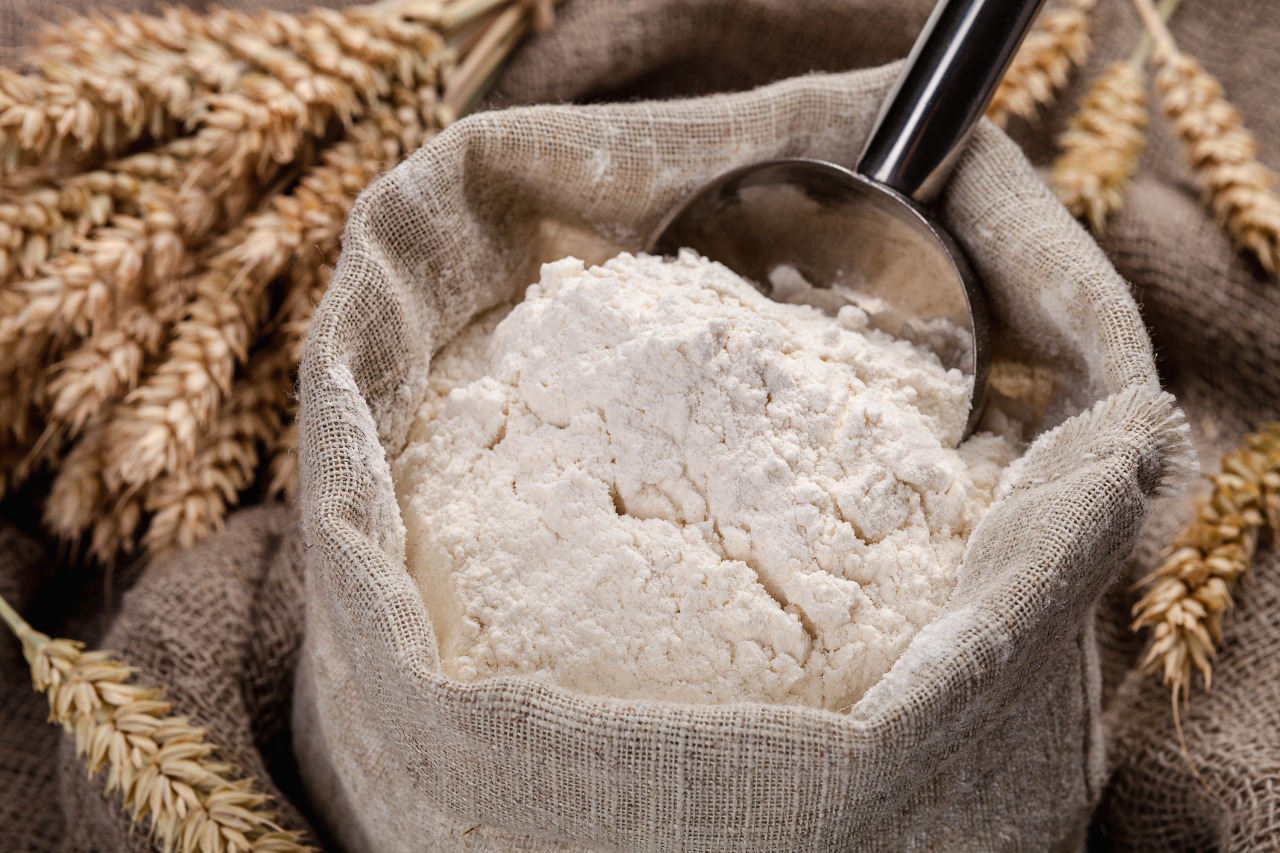
Flour is the primary ingredient in the production of bakery items such as bread, pastries, cakes, coating of fried food, and others. Some manufacturing companies also apply flour to produce pasta or noodles, crackers, biscuits, animal feed, among others. Flour soars in consumption through restaurants and bakeries that eventually led to an increase in the production of flour over the years.
However, the early months of 2020 change the production and sales in the commercial arena. The pandemic affects most households and work-from-home employees to switch from commercial pastries to home-made baked foods. Even the views of simple home-made bread or dough recipes have escalated drastically from 10,349 views in the early weeks of March to 660,756 views by the first week of April.
Overview of Flour in the Global Market
Over the past four years, the wheat division tops the flour market and is growing swiftly. But as lifestyles changes from traditional to urban to modern customs, it has paved the way to the demand of several flour types. One of the main lifestyles that are in-demand is restaurants and fast foods, which substantially impact the market growth of different flour types.
Additionally, the increase in healthy food habits and other health concerns requires flour millers to generate high-protein and gluten-free flour alternatives like corn flour, soya flour, maize flour, and rice flour. Furthermore, the changes in lifestyle and sales led to the expansion of different grain farmlands as well as the marine field industry.
As the world is innovating, consumers and chefs alike continue to expand their horizons to healthier food substitutes. Standard gluten-free flour options are now being left in the market shelves for a better, sustaining, flavorful alternative flours. The birth of the Keto Diet and Whole30 increased the popularity and demand of alternative flours that give a different texture to food, several unique flavors, and rich aroma catering to a wide variety of taste buds.
These flour alternatives include produce from vegetables such as sweet potatoes, cabbage, pumpkins, and cauliflower; fruits like apples, bananas, and coconuts; seeds like hemp, sunflower, poppy, and flax; oats, nuts, and even insects like crickets.
Types of Flour in the Current Market
1. All-Purpose Flour
The most common flour on all store shelves and the household kitchen is the all-purpose flour. It contains the seed’s endosperm and has a protein value of 10 – 13%. It is best used for bread, waffles, biscuits, pancakes, pasta, pizza dough, and cookies.
2. Pastry Flour
Pastry flour is often bleached wheat with a softer, finer texture. It is low in gluten and has a protein value of 7.5 – 9.5%. It is best used for waffles, biscuits, cookies, muffins, pie crusts, scones, and pound cakes.
3. Whole Wheat Flour
Whole wheat flour is made up of the three layers of wheat berries, the endosperm, the germ, and the bran. The germ lets the final product denser that’s the reason why you have to let the dough rest for 30 minutes before baking. It has a protein value of 13 – 14% and is best for bread, waffles, cookies, pasta, pizza dough, and scones.
4. White Whole Wheat Flour
It is made of a different variety of wheat, which contains endosperm, germ, bran, and wheat seed head. As it is a diverse variety of wheat, it is sweeter compared to whole wheat flour. Its protein value is 13 – 14% and is best used in bread, muffins, and cookies.
5. Bread Flour
Bread flour is made up of hard spring wheat and is known as high-protein flour with a value of 12 – 15%. It is best used for bagels, cookies, Artisan bread, and yeast bread.
6. Cake Flour
As the name implies, cake flour is best for baking airy or spongy cakes like layer cakes, pound cakes, angel food cakes, and chiffon cakes. It is made from soft winter wheat, which has a lower protein value of 6 – 8%.
7. Self-Rising Flour
When there are time constraints in cooking, self-rising flour is the go-to flour for biscuits. It is a combination of all-purpose flour, a leavening agent, which is the baking powder, and salt. The protein value is lesser at 8 – 9%.
8. Vital Wheat Gluten Flour
It is not actually a flour, technically, as it came from hydrated wheat flour. The hydration activates the gluten and processed back to remove everything except gluten. It will then be dried and pounded back again into powder with a protein value of 40 – 85%. It is the best booster for low-protein flours such as whole wheat, rye, and sprouted flours.
9. Gluten-Free Flour
Catering to an audience with dietary conditions, celiac disease, allergies, or those who want to lessen their gluten intake, millers have blended several flours like corn, rice, tapioca, arrowroot, potato, bean, amaranth, buckwheat, sorghum, quinoa, ground nuts, ground oats, or flax meal. It is best used for gluten-free diets, bread, cakes, waffles, and cookies.
10. Sprouted Flour
Sprouted flour is made from sprouted grains like sorghum, corn, einkorn, amaranth, spelt, Kamut, and rye. These grains produce creamier and mild-tasting flours, which is best for cakes, crackers, cookies, and bread.
11. Semolina and Durum Flour
Semolina is made from the endosperm of durum wheat, which has a high gluten content. It is best used in pasta products such as macaroni, spaghetti, vermicelli, and noodles.
12. Cauliflower Flour
Known as the first-ever vegetable-based baking mix, it can replace your regular flour to make biscuits, bagels, pie-crust, flatbreads, and even cakes. The cauliflower flour can provide you with 320 calories, 60 grams of carbohydrate, and 8 grams of fiber per cup.
13. Banana Flour
Banana Flour is the best and healthier substitute for white or wheat flours. It is a gluten-free product usually used in paleo diets and primal diets.
The 2020 trend opens a lot of doors to millers of different plant sectors. Consumers and manufacturers alike knew very well that the refined white flour, which has been in the world’s lifestyle is shifting to several healthier alternatives. These new flours and trends will draw baking and cooking to another level.
ReadMore on our products here , and view our range of flour here
[su_button url=”https://www.facebook.com/tradelinksainternational/?view_public_for=105757601162821″ target=”blank” style=”flat” size=”5″ icon=”icon: facebook-f” text_shadow=”0px 0px 0px #000000″] [/su_button] [su_button url=”https://www.linkedin.com/company/tradelink-sa/?viewAsMember=true” target=”blank” style=”flat” size=”5″ icon=”icon: linkedin” text_shadow=”0px 0px 0px #000000″] [/su_button] [su_button url=”https://www.instagram.com/tradelinknz/” target=”blank” style=”flat” size=”5″ icon=”icon: instagram” text_shadow=”0px 0px 0px #000000″] [/su_button] [su_button url=”https://www.youtube.com/channel/UCewEsyFy0Y_1MdjwhsXvT0w” target=”blank” style=”flat” size=”5″ icon=”icon: youtube” text_shadow=”0px 0px 0px #000000″] [/su_button]
[su_youtube_advanced url=”https://www.youtube.com/watch?v=LCEkNZdMi04″ height=”200″ responsive=”no” fs=”no”]


